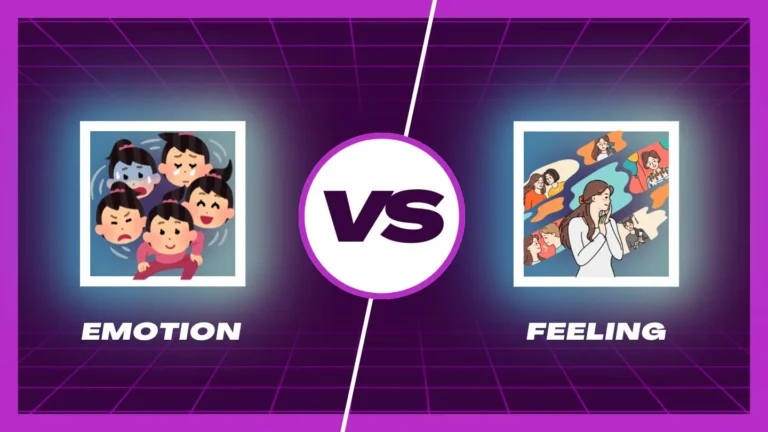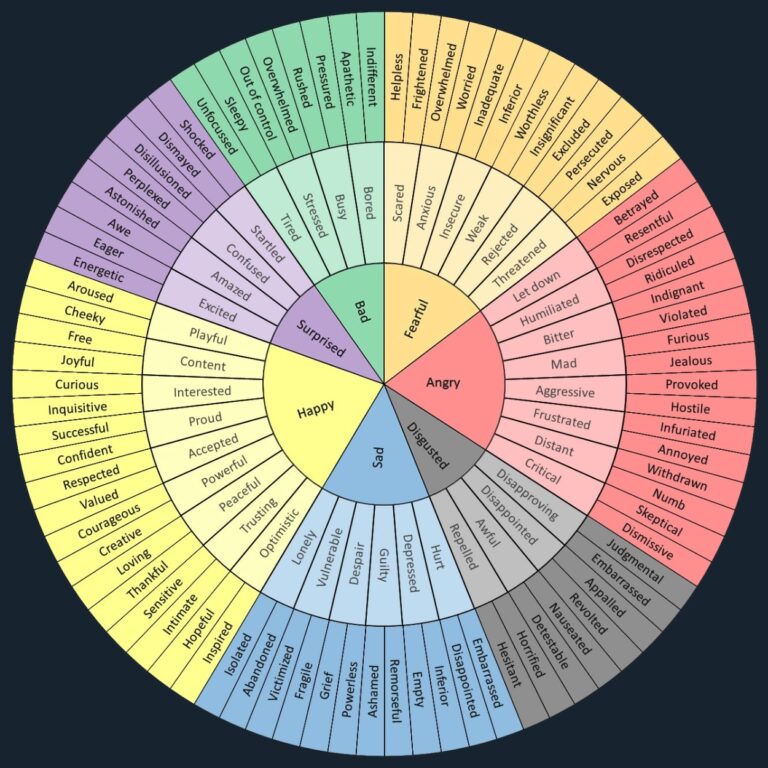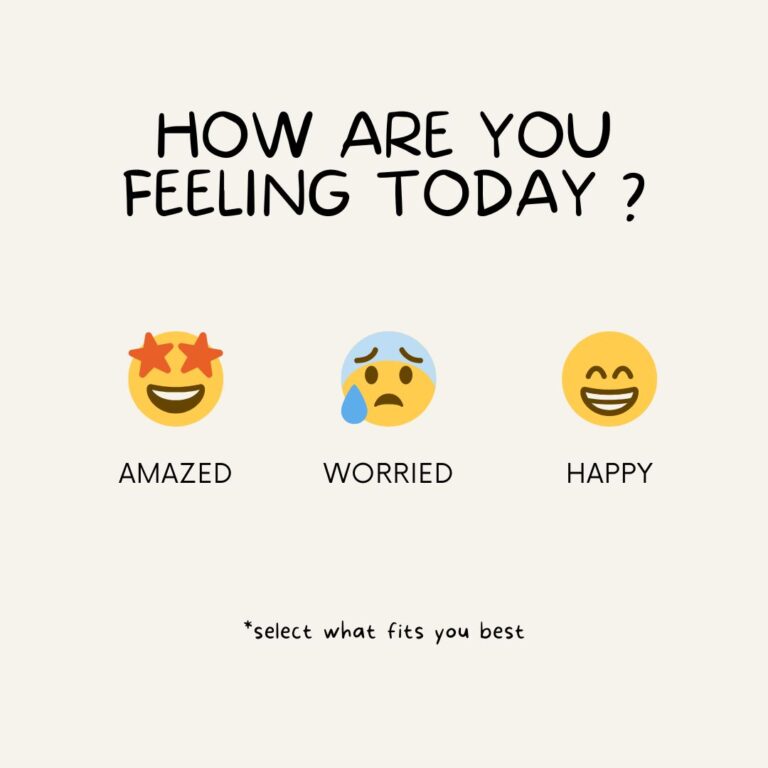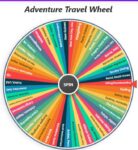
Emotions are an essential part of being human, influencing our thoughts, actions, and relationships. Though we often think of emotions in basic terms like happiness, sadness, or anger, the reality is far more complex.
Psychologists and researchers have suggested that humans can experience tens of thousands of distinct emotional states—some estimates even reach as high as 34,000 emotions.
This incredible diversity is captured in our 34,000 emotions list, which provides a framework for understanding the nuances of our feelings.
But what does that mean, and how can we truly understand such a vast array of feelings? This article will explore the depth of human emotions, why they matter, and how you can begin to recognize and name the complex emotions you experience daily.
Why 34,000 Emotions?

You may wonder how researchers arrived at the idea that humans can feel up to 34,000 emotions. This estimate comes from the combination of core emotions and their numerous nuanced variations.
For instance, feeling “happy” is not just one emotion. There’s contentment, joy, exhilaration, satisfaction, and even more subtle variations like feeling “cheerful” or “gleeful.”
The combination of these base emotions with context-specific experiences leads to a wide range of feelings that can be categorized and named differently.
List of Emotions: 450 Words that Express Feelings
34,000 emotions list: Happiness and Positive Emotions
Here’s the Happiness and Positive Emotions:
| Joy | Pride | Compassion | Faithfulness |
| Contentment | Euphoria | Faith | Inspiration |
| Excitement | Fulfillment | Generosity | Motivation |
| Elation | Gratification | Humility | Lightheartedness |
| Satisfaction | Playfulness | Sympathy | Peacefulness |
| Cheerfulness | Optimism | Adoration | Hope |
| Delight | Hopefulness | Benevolence | Sparkle |
| Bliss | Wonder | Eagerness | Trustworthiness |
| Amusement | Love | Exuberance | Kindheartedness |
| Enthusiasm | Affection | Confidence | Respect |
| Pride | Admiration | Patience | Sympathetic |
| Euphoria | Confidence | Amity | Tenderness |
| Fulfillment | Empowerment | Whimsy | Enthralled |
| Gratification | Triumph | Zest | Buoyancy |
| Playfulness | Serenity | Carefree | Jubilant |
| Optimism | Tranquility | Elation | Carefreeness |
| Hopefulness | Ecstasy | Heartwarming | Vibrance |
| Wonder | Gratitude | Radiance | Devotion |
| Love | Zeal | Brightness | Graciousness |
| Affection | Thrill | Laughter | Altruism |
| Admiration | Elation | Reassurance | Appreciation |
| Confidence | Inspiration | Amity | Philanthropy |
| Empowerment | Liveliness | Friendship | Passion |
| Triumph | Satisfaction | Safety | Excitement |
| Serenity | Glee | Comfort | Playfulness |
| Tranquility | Glow | Pleasure | Splendor |
| Ecstasy | Jubilation | Blissfulness | Compassionate |
| Gratitude | Positivity | Faithfulness | Blissfulness |
| Zeal | Warmth | Inspiration | Rejuvenation |
| Thrill | Kindness | Motivation | Thriving |
| Elation | Trust | Lightheartedness | Confidence |
| Inspiration | Compassion | Peacefulness | Awe |
Sadness and Negative Emotions
| Grief | Affliction | Loss | Dread |
| Sorrow | Dismay | Grief-stricken | Despondence |
| Despair | Isolation | Deflation | Insecurity |
| Melancholy | Alienation | Mourning | Submissiveness |
| Loneliness | Weariness | Broken-hearted | Downheartedness |
| Heartache | Desolation | Ruin | Vulnerability |
| Mourning | Unhappiness | Heartbroken | Uncertainty |
| Regret | Misery | Sobbing | Numbness |
| Gloom | Woe | Hurt | Misgiving |
| Disappointment | Suffering | Distress | Hesitation |
| Frustration | Discouragement | Forlorn | Skepticism |
| Hopelessness | Homesickness | Pity | Erosion |
| Pessimism | Emptiness | Nostalgia | Trepidation |
| Bitterness | Longing | Sullen | Doubt |
| Dejection | Defeat | Woefulness | Hesitance |
| Disillusionment | Rejection | Tearfulness | Apprehension |
| Yearning | Loss | Disconsolate | Weariness |
| Shame | Grief-stricken | Bleakness | Shamefacedness |
| Guilt | Deflation | Devastation | Weakness |
| Anguish | Mourning | Disheartened | Overwhelm |
| Affliction | Broken-hearted | Discomfort | Underappreciation |
| Dismay | Ruin | Lament | Dullness |
| Isolation | Heartbroken | Hopelessness | Restlessness |
| Alienation | Sobbing | Dread | Anxiety |
| Weariness | Hurt | Despondence | Anguish |
| Desolation | Distress | Insecurity | Sadness |
| Unhappiness | Forlorn | Submissiveness | Lamentation |
| Misery | Pity | Downheartedness | Mourning |
| Woe | Nostalgia | Vulnerability | Withering |
| Suffering | Sullen | Uncertainty | Subduedness |
| Discouragement | Woefulness | Numbness | Darkness |
| Homesickness | Tearfulness | Misgiving | Misfortune |
| Emptiness | Disconsolate | Hesitation | Clouded |
| Longing | Bleakness | Skepticism | Tragedy |
| Defeat | Devastation | Erosion | Burden |
| Rejection | Disheartened | Trepidation | Shamefulness |
| Loss | Discomfort | Doubt | Suppressed |
| Grief-stricken | Lament | Hesitance | Weight |
| Deflation | Hopelessness | Apprehension | Blame |
| Mourning | Dread | Weariness | Withdrawn |
| Broken-hearted | Despondence | Shamefacedness | Unsettled |
| Ruin | Insecurity | Weakness | |
| Heartbroken | Submissiveness | Overwhelm | |
| Sobbing | Downheartedness | Underappreciation | |
| Hurt | Vulnerability | Dullness |
Anger and Aggression
| Rage | Jealousy | Petulance | Sarcastic |
| Fury | Belligerence | Peevishness | Impatience |
| Wrath | Insult | Defiance | Provoked |
| Frustration | Ragefulness | Resistance | Mockery |
| Irritation | Sarcasm | Provocation | Cynicism |
| Vexation | Cruelty | Smoldering | Aggressive |
| Hostility | Violent | Disdain | Cruel |
| Bitterness | Scorn | Belligerency | Vindictive |
| Resentment | Pugnacity | Opposition | Begrudging |
| Agitation | Enraged | Displeasure | Obnoxiousness |
| Annoyance | Malice | Offended | Snide |
| Outrage | Objection | Aloofness | Derisive |
| Hatred | Hostile | Sarcastic | Tense |
| Contempt | Annoyed | Impatient | Angsty |
| Indignation | Vehemence | Turbulent | Fierce |
| Disgust | Condescension | Defiant | Explosive |
| Belligerence | Grudge | Relentless | Intense |
| Combativeness | Sullenness | Grouchy | Ferocious |
| Defiance | Skepticism | Testy | Grumpy |
| Spite | Seething | Merciless | Bullying |
| Offense | Revulsion | Temperamental | Bossy |
| Aggression | Petulance | Antagonistic | Territorial |
| Vindictiveness | Peevishness | Reproachful | Rebellious |
| Temper | Defiance | Belligerent | Cross |
| Ferocity | Resistance | Livid | Retaliation |
Fear and Anxiety
| Fear | Alarm | Doubt | Jitteriness |
| Terror | Timidity | Nervous | Terrors |
| Anxiety | Trepidation | Hypersensitivity | Franticness |
| Dread | Cowardice | Disquiet | Awkwardness |
| Panic | Foreboding | Fretfulness | Exasperation |
| Fright | Helplessness | Caution | Restless |
| Horror | Overwhelm | Impulse | Nervousness |
| Apprehension | Worry | Instinct | Frailty |
| Nervousness | Concern | Uneasiness | Faltering |
| Unease | Wariness | Mistrust | Confusion |
| Paranoia | Suspicion | Disquietude | Weakness |
| Jitters | Shyness | Anxiety | Preoccupied |
| Phobia | Restlessness | Anxiousness | Scared |
| Alarm | Agitation | Edginess | Fear-struck |
| Timidity | Hesitation | Pessimism | Disturbed |
| Trepidation | Fearfulness | Doom | Unsure |
| Cowardice | Mistrust | Watchfulness | Hyperactive |
| Foreboding | Doubt | Uncertainty | Perplexed |
| Helplessness | Nervous | Hesitance | Frazzled |
| Overwhelm | Hypersensitivity | Tenseness | Unsettled |
| Worry | Disquiet | Pensive | Uneasy |
| Concern | Fretfulness | Jumpy | Diffidence |
| Wariness | Hyper-vigilance | Jumpiness | Timid |
| Suspicion | Nervy | Shivering | Shaking |
| Shyness | Panicked | High-strung | Dismayed |
| Restlessness | Timorous | On-edge | Hysterical |
| Agitation | Apprehensive | Cringy | Agonized |
| Hesitation | Distraught | Besieged |
Surprise and Shock
| Astonishment | Surprise | Distracted |
| Amazement | Shock | Bedazzlement |
| Bewilderment | Startlement | Astonished |
| Wonder | Awe | Surprised |
| Confusion | Disbelief | Mind-blown |
| Stagger | Daze | Jarring |
| Overwhelm | Speechlessness | Unexpectedness |
| Perplexity | Bafflement | Gasping |
| Dumbfoundedness | Astoundment | Dazzled |
| Stunned | Marvel | Unexpected |
| Stupefaction | Flabbergasted | Amazement |
| Awe-struck | Breathlessness | Enthralled |
| Mystification | Shocked | Bewildered |
| Flustered | Disorientation | Suspense |
| Nonplussed | Amazed | Absorption |
| Boggled | Entranced | Eye-opener |
| Frozen | Faint |
The Importance of Emotions
Emotions serve as a guiding compass for our interactions with the world. They shape our decisions, influence our behavior, and play a critical role in how we form relationships.
For example, joy might encourage us to repeat a positive experience, while fear can prevent us from danger.
Recognizing the importance of emotions goes beyond understanding just their surface-level expressions; it involves learning how they interact and influence every facet of our lives.
The Core Emotions
Psychologists have long debated the number of core emotions that make up the basis of human feeling.
Some models suggest just four core emotions—happiness, sadness, fear, and anger—while others like Robert Plutchik’s famous “Wheel of Emotions” suggest eight: joy, trust, fear, surprise, sadness, disgust, anger, and anticipation.
These emotions are considered “core” because they are the foundation from which more complex emotions arise. In Plutchik’s model, each of the core emotions can combine with others to create more complex feelings.
For example, joy mixed with trust can lead to love, while anticipation combined with fear might result in anxiety. This system illustrates how emotions aren’t simple, isolated experiences but dynamic, ever-changing states of mind.
The Spectrum of Emotions
Once you begin to dig deeper into emotions, you realize that each core emotion can branch out into many different feelings. This is how we arrive at the idea of tens of thousands of emotions. Let’s take a closer look at how one core emotion can splinter into many nuanced states.
1. Happiness: Happiness might seem like a straightforward feeling, but it has a variety of forms depending on the context and intensity. Consider these variations:
- Contentment: A sense of calm satisfaction, often experienced after achieving a goal.
- Exhilaration: A high-energy form of joy, often linked to thrilling experiences.
- Gratitude: The appreciation for kindness, gifts, or favors from others.
- Relief: The happiness you feel after a threat or stressful situation is removed.
2. Sadness: Sadness isn’t just about feeling down; it can be nuanced and deeply personal:
- Melancholy: A reflective, quiet sadness that often has a nostalgic undertone.
- Grief: The intense sadness experienced after a significant loss, often overwhelming and long-lasting.
- Disappointment: A subtle form of sadness, usually linked to unmet expectations.
- Heartache: Sadness tied to emotional pain, particularly in relationships.
3. Fear: Fear can manifest in many different ways, often depending on the intensity of the perceived threat:
- Anxiety: A lingering, low-level fear about future uncertainties.
- Terror: An intense, overwhelming fear, often in the face of immediate danger.
- Apprehension: A cautious, hesitant fear, typically before facing an unknown situation.
- Panic: A sudden burst of intense fear, often accompanied by physical symptoms like a racing heart or shortness of breath.
Read More: feelings wheel
The Emotional Blends

As mentioned earlier, emotions can mix and create even more complex feelings. These emotional blends are one of the reasons why the number of emotions is so vast. Here are a few examples of emotional combinations and their blended outcomes:
- Love (Joy + Trust): The deep affection and care for another person, blending feelings of happiness and security.
- Disgust (Anger + Fear): A reaction to something that is perceived as revolting or unacceptable, combining fear with repulsion.
- Guilt (Fear + Sadness): The regret and sorrow we feel after doing something wrong, often mixed with a fear of judgment or consequences.
- Curiosity (Anticipation + Trust): The drive to explore and learn new things, blending excitement about the unknown with a sense of safety in discovery.
How Emotions Affect Our Behavior
Understanding the complexity of emotions isn’t just about labeling feelings. It’s also about recognizing how they influence our behavior. Emotions have a direct impact on decision-making. For example:
- Fear may lead to avoidance or hypervigilance.
- Anger can drive confrontational behavior, but it can also inspire change and action.
- Joy often fosters positive social connections and helps build relationships.
- Sadness, while often viewed negatively, can encourage introspection and personal growth.
Emotional intelligence—the ability to recognize and manage our own emotions and those of others—can be crucial for success in a professional context. Highly emotionally intelligent people tend to navigate social situations more easily, resolve conflicts more effectively, and experience greater overall satisfaction in life.
How to Identify Your Emotions
With such a vast emotional range, it’s easy to get overwhelmed or confused about what you’re feeling.
The first step in emotional awareness is learning to identify and name your emotions accurately. Here’s a simple process you can follow:
- Pause and Reflect: When you experience a strong emotion, take a moment to pause and reflect on what you’re feeling. Is it joy, fear, or something else?
- Break it Down: Once you’ve identified a core emotion, try to drill down into it. For example, if you feel happy, is it excitement, contentment, or pride? If you’re sad, is it grief, disappointment, or loneliness?
- Consider the Cause: Think about what triggered the emotion. Understanding the source of your feelings can give you greater insight into how to manage them.
- Use a Wheel of Emotions: Visual aids like Plutchik’s Wheel of Emotions can help you identify complex feelings by showing how different emotions relate to each other.
Conclusion
The idea of a 34,000 emotions list may seem overwhelming, but it underscores the remarkable depth and complexity of human feelings.
Emotions are dynamic, multifaceted, and deeply personal. By becoming more emotionally aware and learning to recognize and name your feelings, you can enhance your emotional intelligence and improve your overall well-being.
While no one can memorize all 34,000 emotions, we can all take steps to better understand and navigate the emotional landscapes of our lives.
Whether you’re feeling exhilaration, melancholy, anxiety, or awe, every emotion serves a purpose, guiding you through the rich, complex experience of being human.






